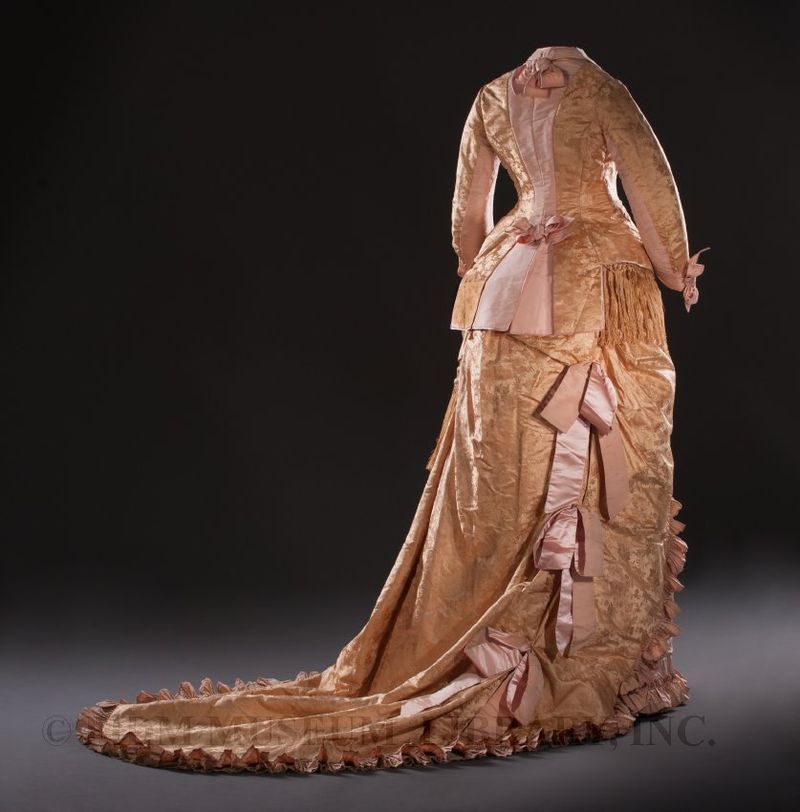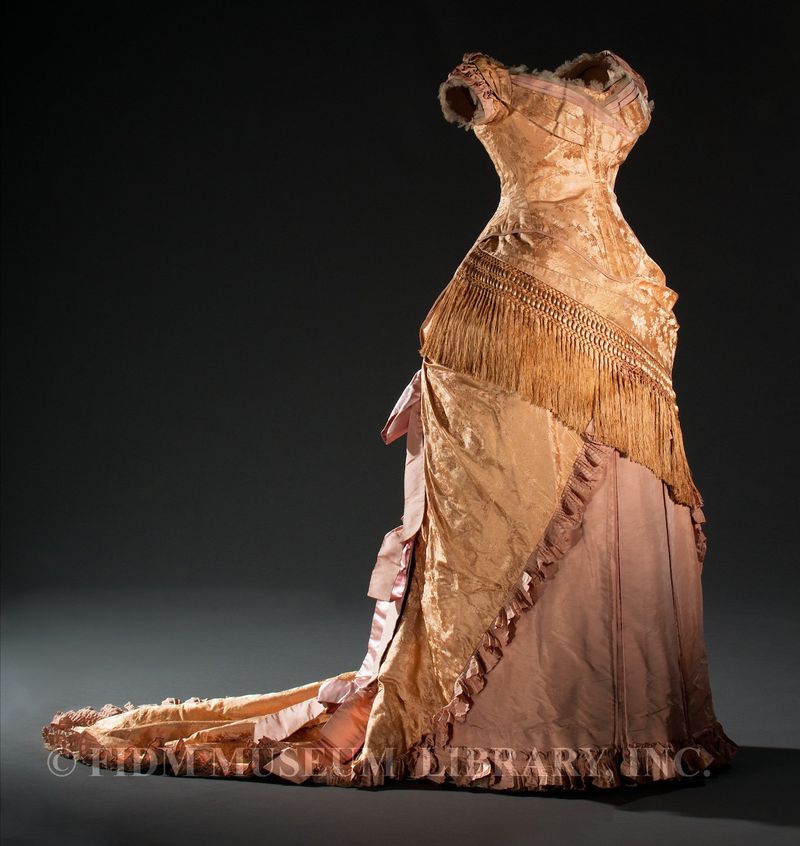It's Fundraising Friday! The FIDM Museum is in the final months of a major fundraising campaign to purchase the Helen Larson Historic Fashion Collection, a private collection of 1,200 historic garments and accessories from four centuries assembled by the late Helen Larson, a collector from Whittier, CA. Each Friday, this blog will feature an exquisite piece from the collection, with information on how you can make a donation to keep these one-of-a-kind treasures together and housed in a public collection in Larson's native Southern California.
Robe à transformation
European
c. 1879
Helen Larson Historic Fashion Collection
In the second half of the 19th century, the robe à transformation was the ultimate day-to-night fashion statement. It came with two (or more) interchangeable bodices: one with a high neck and sleeves for daytime, and another–sleeveless and low cut–for evening. "Dresses with interchangeable bodices are more in demand than ever," the French fashion magazine Le Conseiller des dames et des demoiselles reported in 1854. "They assist, without inconvenience, with no waste of time, in completely transforming an outfit."1 In era notorious for its strict fashion etiquette–often necessitating several changes of clothing per day–the robe à transformation "responded to the need to go … from daytime pursuits to evening occupations and to do so quickly," writes scholar Heidi Brevik-Zender in her new book Fashioning Spaces: Mode and Modernity in Late-Nineteenth-Century Paris.2 As a result, it enjoyed an unusually long vogue. This beautifully preserved pink and cream silk brocade version was worn in the late 1870s by Queen Louise of Denmark.
Evening bodice
Helen Larson spent 50 years building her collection of historic fashion; now, it is in danger of being dispersed forever or absorbed into another private collection, inaccessible to students, researchers, and the general public. The FIDM Museum needs your help to save the Larson collection. You can make a contribution of any amount online or by mail. Donations are tax deductible; if your company has a matching gift program, your support will go even further. The FIDM Museum has until the end of 2015 to finish raising the necessary funds, so now is the time to join the campaign and help make fashion history.
1Quoted in Heidi Brevik-Zender, Fashioning Spaces: Mode and Modernity in Late-Nineteenth-Century Paris (University of Toronto Press, 2015), 143.
2Brevik-Zender, Fashioning Spaces, 148.



